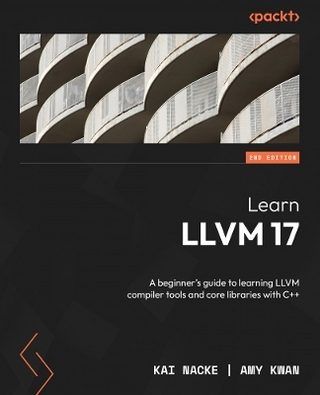
Software Reading Techniques
Apress (Verlag)
978-1-4842-2345-1 (ISBN)
Dr Yang‐Ming Zhu’s depth of experience as a software architect, team leader, and scientist make him singularly well-equipped to bring you up to speed on all the techniques and tips for optimizing the effectiveness and efficiency of your software review and inspection skills.
What You'll Learn:
Improve software review, inspection procedures, and reading skills
Study traditional and modern advanced reading techniques applicable to software artifacts
Master specific reading techniques for software requirements specification, software design, and code
Who This Book Is For:
Software professionals and software engineering students and researchers
Yang‐Ming Zhu is Principal Scientist at Philips Healthcare, currently serving as the software architect for the Recon and Imaging Physics team for Advanced Molecular Imaging. He practices and researches image processing and software engineering with a focus on software architecture, requirements engineering, best practices, software quality, and processes. He is a senior member of IEEE and has published more than 80 book chapters and papers in such journals as IEEE Software, IEEE IT Professional, IEEE Trans Medical Imaging, IEEE Trans Image Processing, Journal of Nuclear Medicine, Physical Review Letters, Physical Review E, and Applied Physical Letters. He holds nine US patents (additional seven are pending approval), numerous professional awards, the Software Architecture Professional Certificate from the Software Engineering Institute at Carnegie Mellon University, and advanced degrees in computer science (MS from Kent State University), biomedical engineering (MS/BS from Shanghai Jiaotong University), and physics (PhD from Southeast University).
Chapter 1. Introduction.- Chapter 2. Software Review Procedures.- Chapter 3. Basic Software Reading Techniques.- Chapter 4. Scenario‐Based Reading Techniques.- Chapter 5. Requirements Reading Techniques.- Chapter 6. Design Reading Techniques.- Chapter 7. Code Reading Techniques.- Chapter 8. Conclusion.
| Erscheinungsdatum | 28.11.2016 |
|---|---|
| Zusatzinfo | 10 Illustrations, color; 3 Illustrations, black and white; XIX, 126 p. 13 illus., 10 illus. in color. |
| Verlagsort | Berkley |
| Sprache | englisch |
| Maße | 155 x 235 mm |
| Themenwelt | Mathematik / Informatik ► Informatik ► Programmiersprachen / -werkzeuge |
| Mathematik / Informatik ► Informatik ► Software Entwicklung | |
| Informatik ► Theorie / Studium ► Compilerbau | |
| Schlagworte | abstraction‐driven reading • active design review • checklist‐based reading • class diagrams • defect‐based reading techniques • Fagan inspection • object‐oriented code reading • perspective‐based reading • requirements reading techniques • scenario‐based reading techniques • scope‐based reading techniques • semantic checking • Sequence Diagrams • Software • software reading techniques • software review procedure • state diagrams • task‐directed inspection • traceability‐based reading • usage‐based reading • use‐case‐driven reading |
| ISBN-10 | 1-4842-2345-4 / 1484223454 |
| ISBN-13 | 978-1-4842-2345-1 / 9781484223451 |
| Zustand | Neuware |
| Haben Sie eine Frage zum Produkt? |
aus dem Bereich


